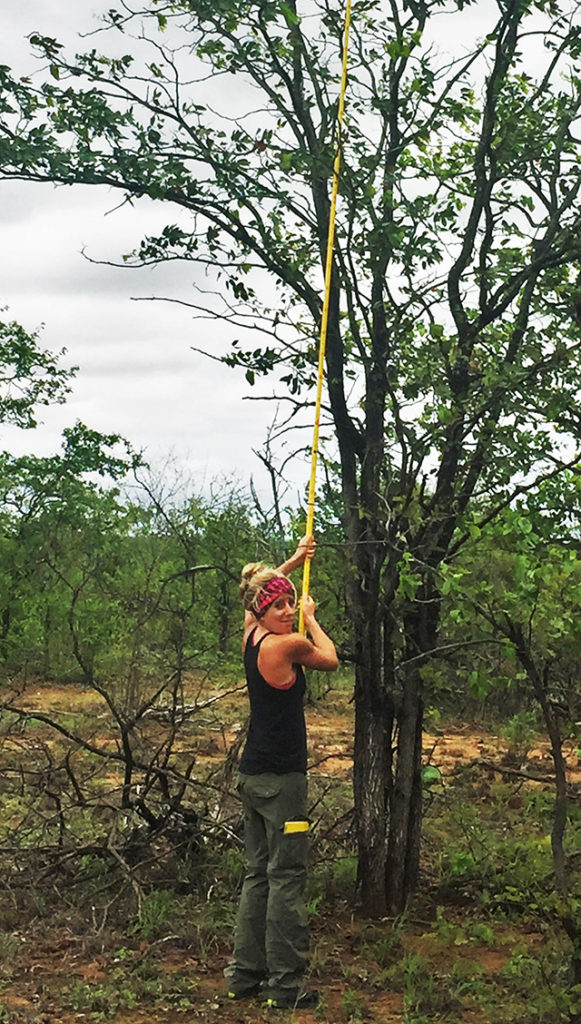It is easy to study what you can see. Researchers know a lot about how plants work aboveground, but what happens out of sight under the surface may control more than we once thought.
Ecoss researchers in the Plant and Ecosystem Ecology—PEER—Lab at Northern Arizona University are digging into the soils of South Africa and Alaska to shed light on a poorly understood topic: how plant roots function. A $300,000 Mellon Foundation grant funds the South Africa study, and a $1.6 million National Science Foundation grant funds the Alaska study. Their findings will help model the effects of climate change on those ecosystems.
Roots feed water and nutrients to plants. The roots of most land plants are entwined with filamentous organisms, called mycorrhizal fungi. These fungi break down complex organic matter in the soil into nutrients more easily absorbed by the plant. Researchers know more about the shape of roots than how they actually function, or how this functioning is affected by fungi.
“For the last 100 years, people have been measuring root biomass and root profiles, but very few studies look at the function of those roots in those profiles,” said Michelle Mack, professor of ecosystem ecology, and director of the PEER Lab.
In South Africa, land managers want to know how climate change may affect the current spread of woodland into grassland habitats. PEER Lab researchers spent spring break in Kruger National Park studying the growth rate of trees, with an eye on the influence of grass and tree roots. Grass roots are using water from shallower layers of soil than tree roots, avoiding direct competition, yet grasses appear to inhibit tree growth more strongly than vice versa. Are the nuances of belowground competition—such as who gets first crack at surface precipitation as it filters into the soil—more important drivers of plant growth than previously thought?
In the Alaskan Arctic, warming temperatures are thawing the layer of frozen ground known as permafrost, unlocking an essential ingredient of plant growth—nitrogen. For the same reason we buy nitrogen fertilizer for our crops, this nutrient is typically in short supply and naturally limits plant growth. PEER Lab researchers will spend the summer at their study sites in Healy, near Denali National Park, and the Toolik Field Station on the North Slope of Alaska, where they have been injecting a uniquely labeled form of nitrogen deep into the soil. Can plants access that newly available nitrogen at the deepening thaw boundary? Can mycorrhizal fungi extend the reach of shallower roots?
Answering these questions is important because both carbon dioxide, which is a greenhouse gas, and nitrogen are being released by thawing permafrost at the same time. Nitrogen fuels plant growth, meaning more photosynthesis, which pulls carbon dioxide out of the atmosphere. If plants can access that new source of nitrogen, they may partially offset the release of carbon dioxide into the atmosphere.
What both studies have in common is a focus on function over form.
“Just like rooting depth for these tundra species might not be as important as mycorrhizal depth,” says Mack, “In South Africa, rooting depth might not be as important as who’s in line ahead of you.”
Plant growth is a key component of carbon cycling models, which have only recently begun accounting for a plant’s ability to absorb nutrients. Mack’s research can improve the accuracy of these models by looking under the surface for a more robust understanding of what drives plant growth.



